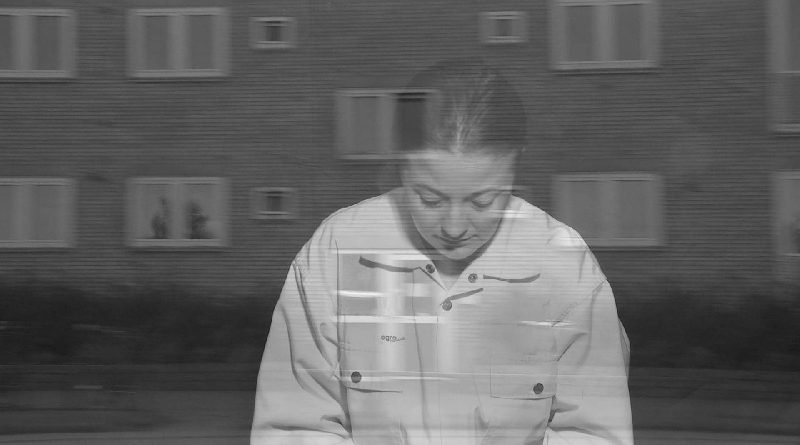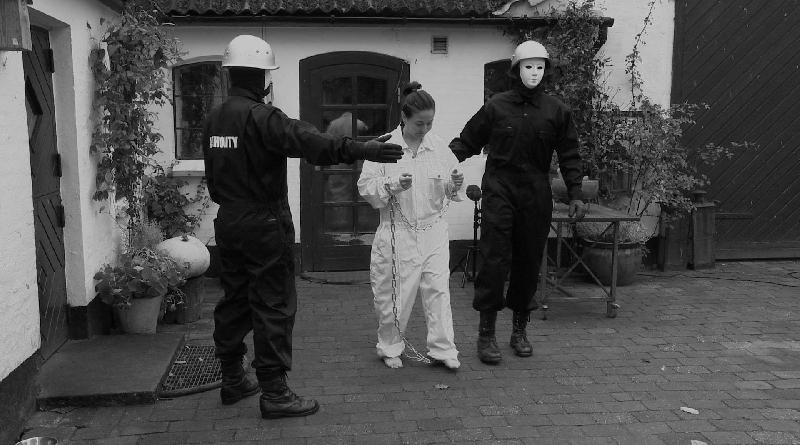Anti-Social Club

Anti-Social Club
Written by Danny Germansen | Review by Prarthana Mitra
Following in the footsteps of Albert Camus, Margaret Atwood and Chantal Ackerman, Danny Germansen’s Anti-Social Club depicts how coded structures and norms of society refuse outsiders a space and an identity of their own. A deeply political critique on the forces of consumerism, capitalism and state surveillance which run the world today, this Danish short film portrays one such misfit who prefers to live on the fringes of society and is quite content living the life she has created, amidst nature, literature and self-actualisation.

Filmmaker and video artist Germansen dismantles the dominant and normative standards we often use to reject “other” narratives, after being inspired by Romanian actress Suzana Lungu, who introduced him to the freedom that comes with self-sufficiency and bonding with nature.“She would work in her garden in her bikini taking care of her tomato plants and other plants that she will go to the market to sell…you don´t have to be a part of the system or society, but be more or less self-sufficient by living of the land and live a life outside the norms of society without all the materialistic things people of the world need today,” Germansen recounted her as telling him once. In the film, Suzana as herself tills the land, feeds her cattle and gives back to the earth, echoing the ethos of environmental activists around the world, endorsing a sustainable model of life to replace the utilitarian one. Unfortunately, anti-social characters who do not want to participate in shared ideologies like child-bearing and socialising, or contribute to amassing wealth, are treated as an aberration and subjected to the most brutal oppression. There is no attempt, however, to understand how their solitary life can be a fulfilling experience, and can coexist in its timeless bubble.

The first part of the film thus helps set up the life of an anti-social without making a show out of it. In this respect, the background score does add a dramatic quality to the otherwise nondescript storytelling. But the plot builds up to an ominous climax, so we go with it. As the camera lingers on Suzana’s lissom bikini-clad body, going about her daily chores, sun bathing, pleasuring herself, making herself a meal with the foods she has grown, settling down to read a book—not once are we struck by a feeling of loneliness or emptiness. We see someone comfortable in her own skin, as an almost enviable life unfolds before us. Until a radio programme announces to Suzana that she is in danger and guilty of being too free. Her crime, as we know by now, is challenging the status quo and posing a threat to the illusion of “normal life” which could not possibly exist concurrently with the “other”. In this conflict of contrary cultures, the devices of psychology, economics and external stimuli play an important role in what’s to follow.

The second half focuses on the turning of Suzana into a compliant subject of the state, and in a Clockwork Orange-esque sequence, we are introduced to state-sponsored instruments and agents who coercively brainwash her along with many like her, until they are completely under the spell of the ideal citizenship. The powerful imagery and rapid cuts towards the end heighten the tension as we hope against hope for Suzana’s free spirit to reign supreme. The juxtaposition of utopia and dystopia has an unnerving effect on the viewer, and brings them face to face with a reality that is no longer futuristic (as Orwell had predicted). There is marvellous range in cinematography and art direction in this respect, and the vibrant dreamy colours of Suzana’s anti-social days are replaced by muted and morbid colours, often switching to monochrome in the latter half. Germansen has attempted to integrate the unpopular into the popular codes and modes of representation, and Anti-Social Club serves as a lament, and reminder, for the sacrifice of individual anarchy to meaningless routine.
 Prarthana is presently in between odd jobs and obtaining her master’s degree in literature. She loves modern poetry and meditative cinema. Based out of Calcutta, Prarthana observes people, football, films and enjoys writing about all three. Of late, she relates to Frank Ocean’s music. Her writing experience consists of writing for various sites such as Try Cinema, The Indian Economist, Doing The Rondo, Saintbrush and various academic journals.
Prarthana is presently in between odd jobs and obtaining her master’s degree in literature. She loves modern poetry and meditative cinema. Based out of Calcutta, Prarthana observes people, football, films and enjoys writing about all three. Of late, she relates to Frank Ocean’s music. Her writing experience consists of writing for various sites such as Try Cinema, The Indian Economist, Doing The Rondo, Saintbrush and various academic journals.


